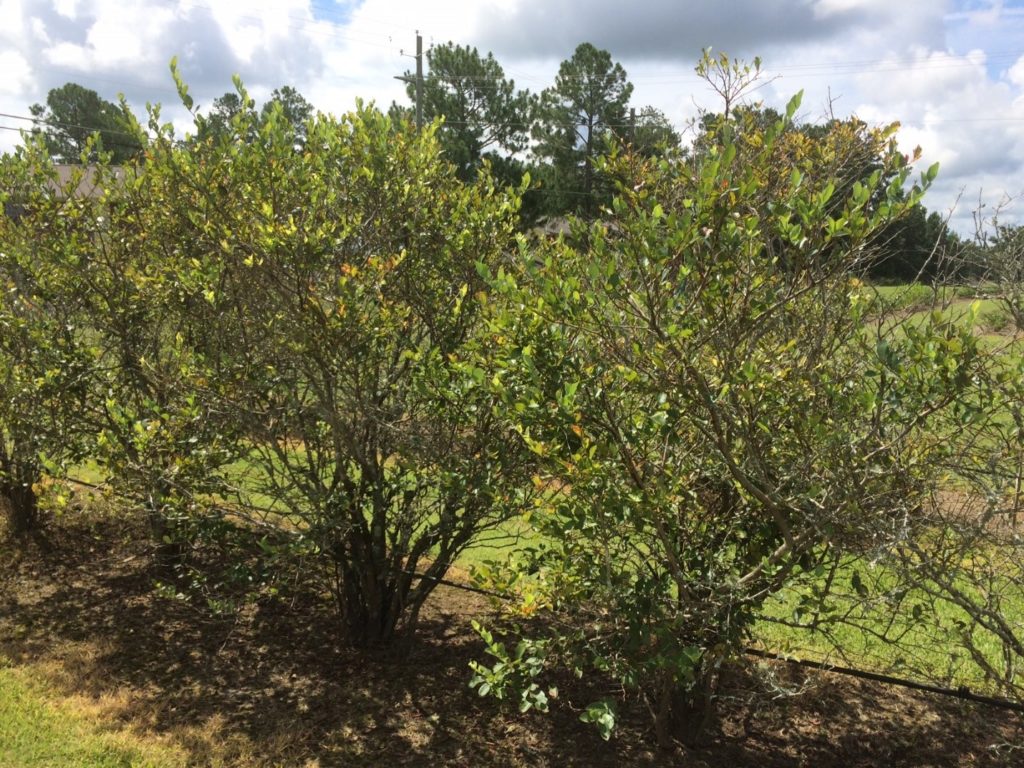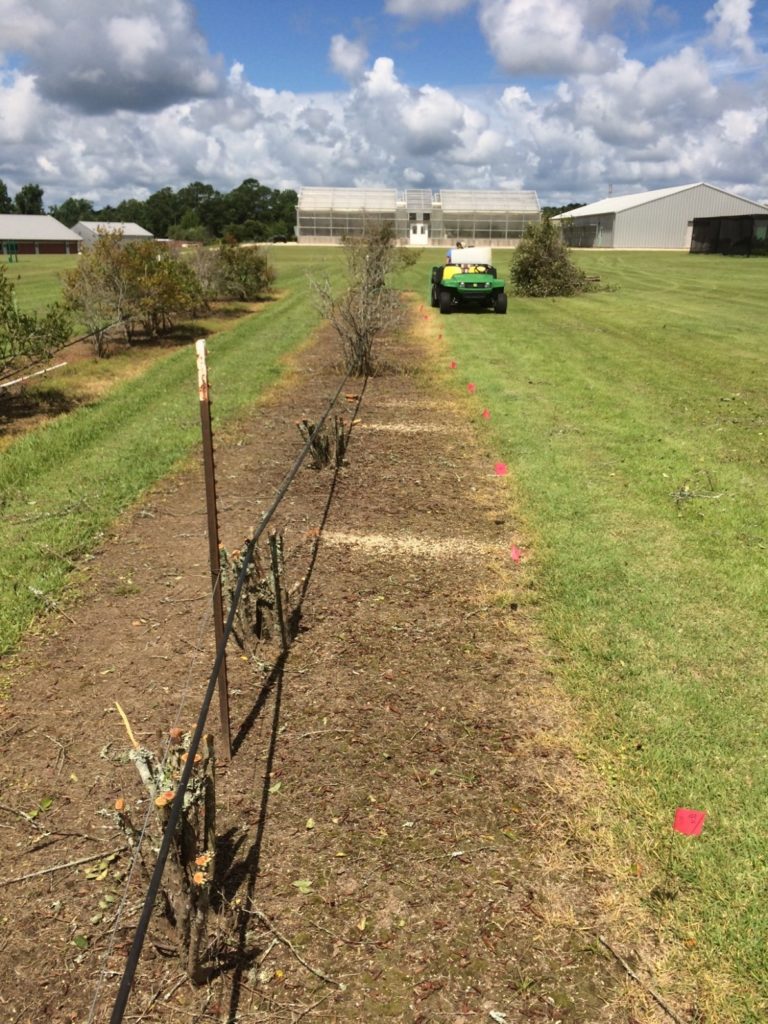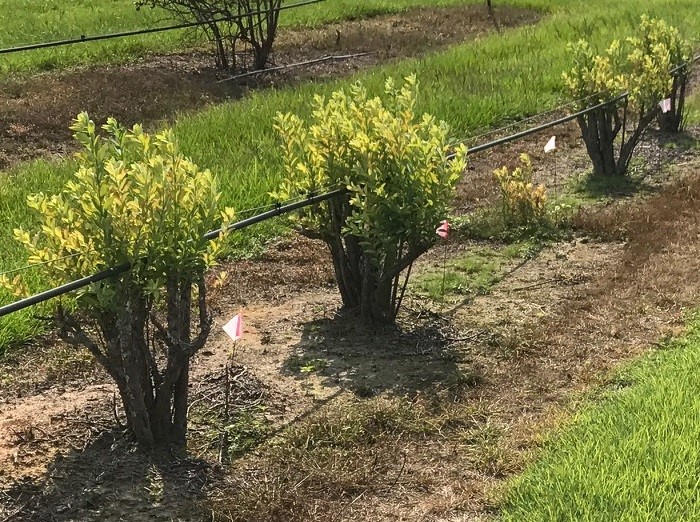Eric T. Stafne, Mississippi State University and Barbara J. Smith, USDA-ARS, Poplarville, MS
Rabbiteye blueberry bushes are relatively easy to grow and commonplace across Mississippi and the rest of the southeastern U.S.; however, if not properly maintained the bushes will decline over time. Renovation pruning is a way to re-invigorate bushes by severely cutting back old growth to promote flushes of new canes that lead to more fruit bearing potential. Producers who purchase old rabbiteye blueberry plantings often have questions on how best to rejuvenate bushes, including how much to cut off and when fruit will be harvested again.
In much of the southeastern United States, mature bushes are sheared or topped immediately after harvest each year which allows sufficient time for cane regrowth and fruiting bud development during the remaining summer period. While this is a common practice on rabbiteye blueberry bushes, a more radical pruning (renovation) is sometimes required to re-invigorate moribund and poorly maintained plantings of southern highbush blueberry and rabbiteye blueberry.


When renovation pruning is performed, blueberry bushes are pruned to the ground or close to the ground, resulting in no fruit production the following year or perhaps even longer. However, if plants recover quicker, then an earlier harvestable crop could be gained to offset the costs of the renovation process. We did this procedure with eighteen, aged, low productivity ‘Woodard’ rabbiteye blueberry bushes which were pruned at two different heights (ground level and 50 cm above ground level) after harvest in July 2017.
For two seasons, fruit yields were collected and weighed, bushes were measured for growth parameters, and canes weighed. Bushes pruned at 50 cm above ground level had much higher yields in both 2019 (3.47 vs. 0.63 kg) and 2020 (3.91 vs. 1.23 kg), therefore providing a substantial yield benefit. The 50-cm above ground level pruning treatment bushes produced more canes by the end of the study, thus accounting for more fruiting area.
In short, pruning old, non-productive bushes at 50 cm above ground level can provide growers with greater potential for early economic returns than pruning at ground level for ‘Woodard’ rabbiteye blueberry.
